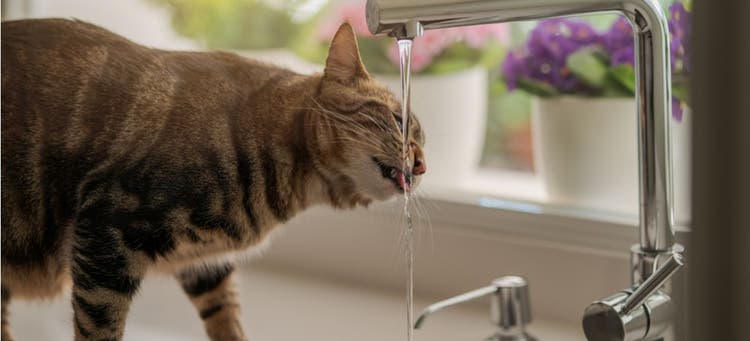
How Much Water Do Pets Need?
Pet nutrition is complicated and occasionally controversial. Some ingredients and diets have earned spirited champions, while others inspire ire in the pet-owning community. While pet parents and vets may never agree on subjects like raw pet food or vegetarianism for cats and dogs, everyone agrees that water plays an essential role in canine and feline nutrition.
How Much Water Do Pets Need Each Day?
Conventional wisdom holds that people should drink about 64 ounces of water every day, eight normal-sized glasses. In reality, the formula for determining a person’s hydration needs is a little more complicated. According to the U.S. National Academies of Sciences, Engineering, and Medicine, men need an average of 15.5 cups of water every day and women need 11.5. Specifics will vary based on factors including weight, activity level, and underlying health concerns.
Here’s what pets require each day:
- Dogs: Dogs generally need more water compared to their body weight than their human companions do. A rule of thumb suggests that dogs should drink a fluid ounce of liquid for each pound of body weight. As with people, needs will depend on various factors. Active dogs and pups who live in hot climates, for example, may need extra water each day.
- Cats: Cat owners are advised to ensure adult pets get between 3.5 to 4.5 fluid ounces of water for every 5 pounds of body weight each day. Since wet food offers some hydration, cats who prefer it to dry kibble may not need quite as much additional water as those who exclusively or mostly eat dry food.
Why Is Water Important for Pets?
Water is just as essential to pets as it is to pet parents. In fact, you might say it’s the most important nutrient around. It makes up 70% of your dog or cat’s body and, whatever the species, it plays a role in every vital bodily process. It also carries nutrients throughout the body, keeps joints lubricated, promotes healthy cognitive function, protects tissues, and ensures a suitable body temperature.
Signs of Dehydration in Pets
In both cats and dogs, dehydration tends to reveal itself through the same selection of symptoms, including:
- Dry, tacky gums
- Excessive panting
- Lethargy
- Loss of appetite
- Sunken eyes
Testing for Dehydration
One of the simplest ways to determine if your pet is dehydrated is by testing their skin elasticity. Gently grasp some of your pet’s skin between your thumb and forefinger. Then, watch as their skin moves from this tented position and back into place. A hydrated pet’s skin will quickly snap back. If your pet is dehydrated, however, their skin will remain tented or return to its original position more slowly.
Can Pets Drink Too Much Water?
Though hydration is essential, there’s such a thing as too much water. What’s more, increased thirst may indicate that your cat or dog is suffering from an unseen health condition. Common culprits for increased thirst include cancer, hyperthyroidism, diabetes, Cushing’s syndrome, or diseases of the liver and kidneys. Certain medications can also produce side effects like excessive thirst. Consult your veterinarian immediately if you notice your pet is spending more time around the water bowl.